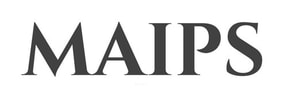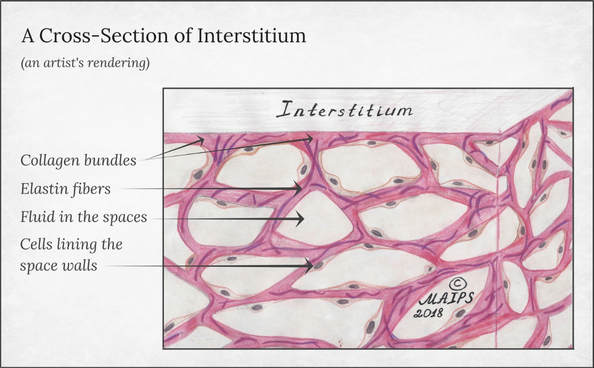|
4/22/2018 12 Comments Interstitium - a New Organ is Discovered. Implications for the Medical AestheticsA study published a month ago in the journal Scientific Reports speaks of a discovery of what may be a previously overlooked organ in our bodies (Benias, 2018). You read that right - a new previously unknown organ. A team of scientists co-led by a pathologist from NYU School of Medicine discovered what, they proposed, may be an organ number 80 in our bodies. They named it 'interstitium'. What exactly is interstitium? - Interstitium is like a system, a network of interconenctive tissue that makes up pockets and spaces filled with fluid; - The interstititum tissue is made of collagen bundles and some elastin. Collagen bundles are intermittently lined by fibroblast-like cells; - This network touches and affects every single other organ and tissue in our body; it is everywhere in our body - in the skin (dermis), inside our digestive system, in the bronchial tree of the lungs, in the adipose tissue (fat), in the veins and arteries, in the fascia in and around the muscles and the skeleton...; - The pockets/spaces of interstitium hold some 20 to 25% of the total body liquids. Interstitium may be the largest organ in our bodies; - Interstitium drains into the lymphatic system and appears to be the source of lymph. Two profound suggestions have already been made about the importance of this discovery. First, the existence of this interconnected tissue-organ likely explains how cancer spreads. Second, it possibly gives the western medicine some explanation of what meridians are in the Chinese medicine. They may correspond to the 'roadways' within the interstitium defining the directions of the fluid movement throughout the body. It is not yet clear whether the implications for the medical aesthetics science and industry are as dramatic as for the rest of the medical field. Perhaps, the medical aesthetics industry may be able to offer consumers a device/treatment that targets specifically interstitium overall beyond just the collagen and elastin on their own. Despite the emphasis of the MAIPS.com on localized treatments and procedures, we must note that the discovery of the interstitium points more to the importance of a holistic and inside-out approach to anti-aging and rejuvenation. It draws attention to the fact that despite the effects of localized rejuvenation procedures, how young and beautiful we look is still affected by the overall condition of the health and body. Particularly, - Consider that interstitium is also inside the dermis (skin). This means that how our skin looks - its plumpness, glow, elasticity, the hydration levels - also depends on the fluids inside the interstitium pockets. This re-emphasizes the importance of body hydration and quality of the water we drink; - The quality of those pockets that hold the fluid is largely influenced by the quality of collagen and elastin. This means that any regimen, treatment or environmental influence affecting our collagen and elastin has at least a two-fold influence on our looks. Not only the collagen and elastin matter as such, but also as a material for the vessel that may or may not contain the optimal fluid volume. Also, the existence of interstitium may now provide some scientific basis for explaining immediate and long-term effectiveness of facial massages and similar procedures, devices for facial massages, microcurrent treatments, etc. Sources 1. Benias PC, Wells RG, Sackey-Aboagye B, et al. Structure and Distribution of an Unrecognized Interstitium in Human Tissues. Scientific Reports. 2018;8:4947. doi:10.1038/s41598-018-23062-6. https://www.ncbi.nlm.nih.gov/pmc/articles/PMC5869738 2. https://www.eurekalert.org/pub_releases/2018-03/nlh-nh032318.php 3. https://www.livescience.com/62128-interstitium-organ.html
12 Comments
|
ArchivesCategories |
Search by typing & pressing enter


 RSS Feed
RSS Feed